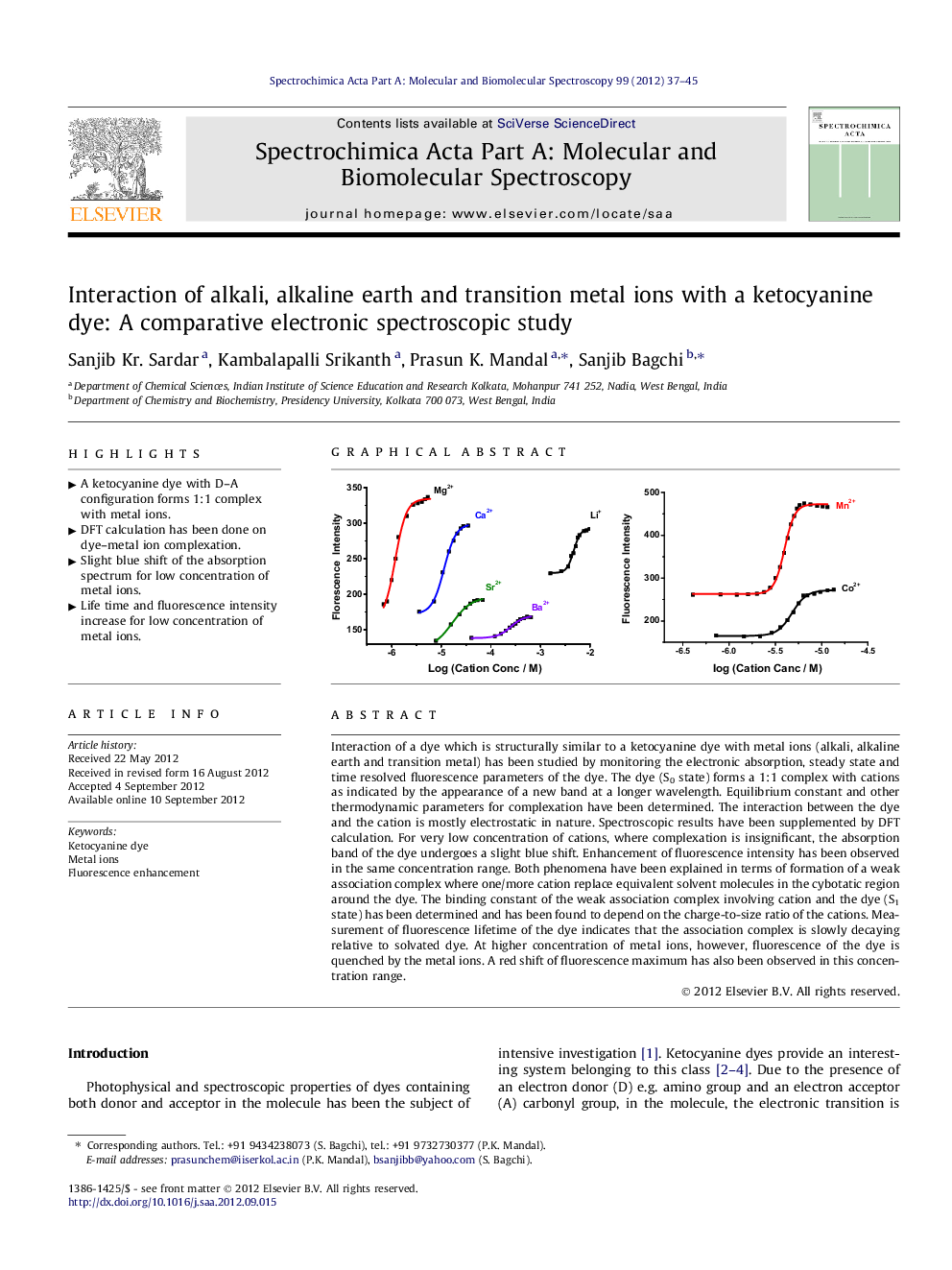| Article ID | Journal | Published Year | Pages | File Type |
|---|---|---|---|---|
| 1235359 | Spectrochimica Acta Part A: Molecular and Biomolecular Spectroscopy | 2012 | 9 Pages |
Interaction of a dye which is structurally similar to a ketocyanine dye with metal ions (alkali, alkaline earth and transition metal) has been studied by monitoring the electronic absorption, steady state and time resolved fluorescence parameters of the dye. The dye (S0 state) forms a 1:1 complex with cations as indicated by the appearance of a new band at a longer wavelength. Equilibrium constant and other thermodynamic parameters for complexation have been determined. The interaction between the dye and the cation is mostly electrostatic in nature. Spectroscopic results have been supplemented by DFT calculation. For very low concentration of cations, where complexation is insignificant, the absorption band of the dye undergoes a slight blue shift. Enhancement of fluorescence intensity has been observed in the same concentration range. Both phenomena have been explained in terms of formation of a weak association complex where one/more cation replace equivalent solvent molecules in the cybotatic region around the dye. The binding constant of the weak association complex involving cation and the dye (S1 state) has been determined and has been found to depend on the charge-to-size ratio of the cations. Measurement of fluorescence lifetime of the dye indicates that the association complex is slowly decaying relative to solvated dye. At higher concentration of metal ions, however, fluorescence of the dye is quenched by the metal ions. A red shift of fluorescence maximum has also been observed in this concentration range.
Graphical abstractFigure optionsDownload full-size imageDownload as PowerPoint slideHighlights► A ketocyanine dye with D–A configuration forms 1:1 complex with metal ions. ► DFT calculation has been done on dye–metal ion complexation. ► Slight blue shift of the absorption spectrum for low concentration of metal ions. ► Life time and fluorescence intensity increase for low concentration of metal ions.
